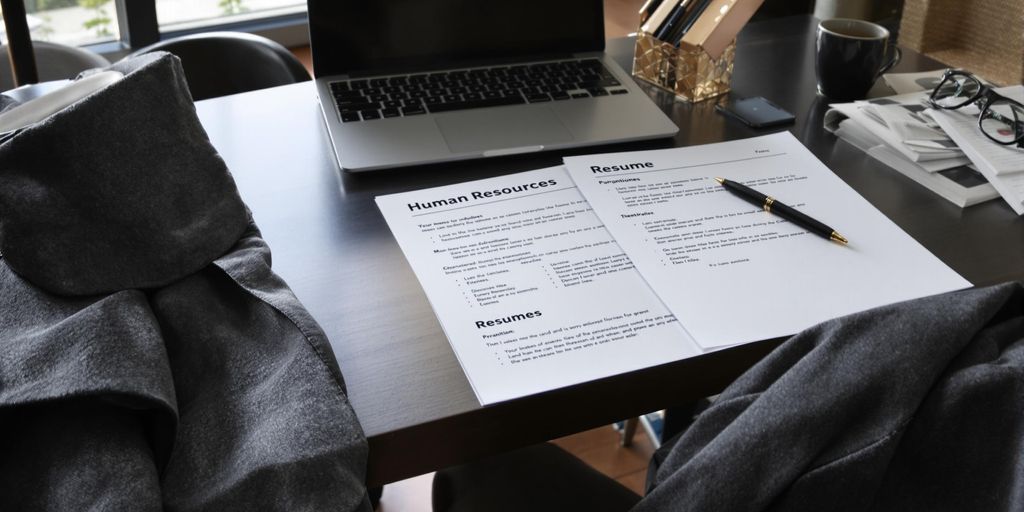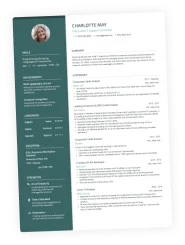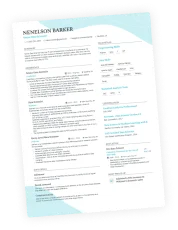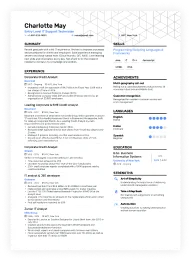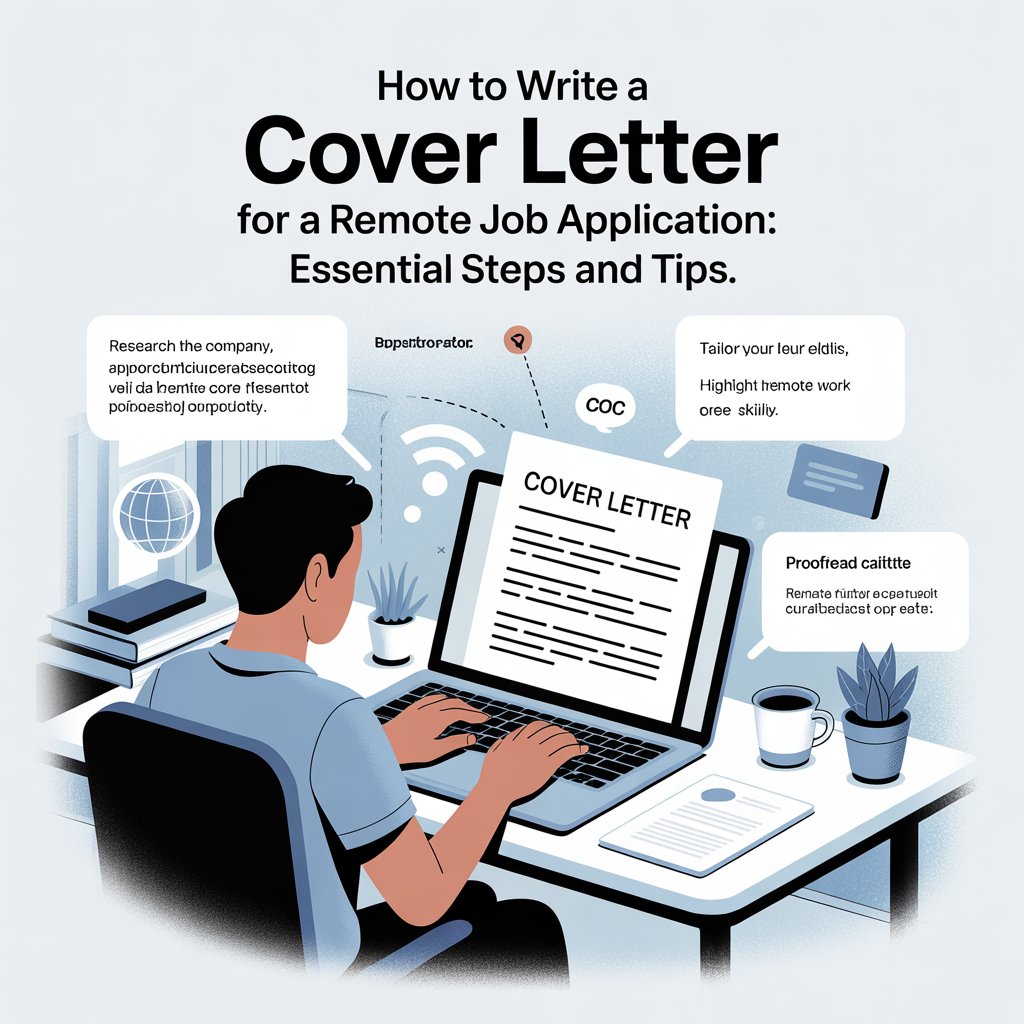Writing a cover letter for a human resources position can be a bit daunting. It’s not just about listing your qualifications; it’s about making a connection with the hiring manager. You want to show that you understand the role and the company. A good cover letter can set you apart from other candidates. So, let’s break down how to craft a compelling cover letter that truly shines.
Key Takeaways
- Personalize your cover letter for each application to show genuine interest.
- Keep it concise—one page is ideal, focusing on key points.
- Highlight your relevant skills with specific examples from your experiences.
- Research the company to demonstrate your knowledge and fit.
- Proofread carefully to avoid mistakes that could cost you the job.
Understanding the Role of a Cover Letter in Human Resources

Cover letters? Are they even still a thing? Absolutely! Think of your cover letter as your introduction. It’s your chance to make a first impression that goes beyond just listing your work history. It’s where you show you’ve got the communication skills necessary to most jobs and that you’re not just another resume in the pile. Let’s break down why they matter, especially in HR.
Importance of Personalization
In today’s job market, generic just doesn’t cut it. A personalized cover letter shows you’ve actually taken the time to research the company and understand the specific role. It’s about connecting your skills and experiences to their needs, not just regurgitating your resume. Think of it as tailoring a suit – it fits better and looks more impressive than something off the rack. It shows attention to detail, which is a big plus for HR roles.
How It Complements Your Resume
Your resume is a summary; your cover letter is the story. While your resume lists your accomplishments, your cover letter explains how you achieved them and why they matter to the company you’re applying to. It’s your chance to add context, show your personality, and highlight the skills that aren’t easily conveyed in bullet points. It’s about making a connection and showing you’re more than just a list of qualifications. An effective cover letter is directed towards a specific position.
Common Misconceptions About Cover Letters
Let’s bust some myths. Some people think cover letters are outdated or only necessary for certain industries. Others believe they’re just a formality. But in reality, a well-crafted cover letter can be a game-changer. It’s an opportunity to stand out, demonstrate your enthusiasm, and address any potential concerns a hiring manager might have. Don’t underestimate its power!
A cover letter is not just a summary of your resume. It’s a chance to showcase your personality, demonstrate your understanding of the company, and explain why you’re the perfect fit for the role. It’s about making a connection and showing you’re more than just a piece of paper.
Here’s a quick list of what a cover letter can do for you:
- Showcase your personality
- Demonstrate your understanding of the company
- Explain why you’re a great fit
- Address potential concerns
Key Elements of a Successful Cover Letter
Professional Formatting
First impressions matter, and your cover letter’s format is the initial handshake. Use a standard business font like Times New Roman or Arial, around 11 or 12 points. Keep your margins at one inch. Consistency is key. Make sure your contact information is clear and matches your resume. A well-formatted letter shows attention to detail. It tells the hiring manager you care about presentation. It’s a small thing that speaks volumes.
Tailoring to the Job Description
Your cover letter should never be a generic template. Read the job description carefully. Identify the key skills and experiences they’re seeking. Then, directly address those requirements in your letter. Use the same language as the job posting. This shows you understand what they need. It also demonstrates that you’ve taken the time to understand the role. Think of it as answering the exam questions directly. Don’t make the recruiter guess why you’re a good fit. Show them. For example, if they need someone with project management skills, describe a project where you successfully managed resources and deadlines. This targeted approach makes your application stand out.
Effective Use of Language
Your word choice matters. Use clear, concise language. Avoid jargon or overly complex sentences. Aim for a professional but approachable tone. Show, don’t tell. Instead of saying you’re a hard worker, describe a time you went above and beyond. Use action verbs to describe your accomplishments. Proofread carefully for any errors in grammar or spelling. A polished letter shows you’re detail-oriented and take pride in your work. It’s about presenting yourself in the best possible light. Think of your cover letter as a sales pitch. You’re selling your skills and experience to the hiring manager. Make it compelling. Make it easy to read. Make it error-free. Consider using online templates and tools to help you get started.
A well-written cover letter is more than just a formality; it’s a strategic tool. It allows you to connect your skills and experiences directly to the employer’s needs, showcasing your unique value proposition.
Crafting a Compelling Introduction
Your cover letter’s introduction is prime real estate. It’s your first, and possibly only, chance to grab the hiring manager’s attention and convince them to keep reading. A weak or generic introduction can lead to your application being overlooked, no matter how qualified you are. Let’s explore how to make a strong first impression.
Hooking the Reader’s Attention
To immediately capture the reader’s interest, start with a compelling hook. Avoid clichés and generic statements. Instead, try to open with something that directly relates to the company, the role, or a recent achievement of yours that aligns with the job requirements. Think of it as a conversation starter – something that piques their curiosity and makes them want to learn more about you. For example, instead of saying “I am writing to apply for…”, try something like, “I was excited to see [Company Name]’s recent initiative in [Specific Area], which aligns perfectly with my experience in…”
Stating Your Purpose Clearly
After your hook, clearly state the purpose of your cover letter. This means explicitly mentioning the position you are applying for and where you saw the job posting. This ensures there’s no ambiguity about your intentions. Being direct and concise saves the reader time and demonstrates your professionalism. It also helps the applicant tracking system (ATS) properly categorize your application. Here’s a simple structure:
- State the position you’re targeting.
- Mention where you found the job posting.
- Briefly explain why you’re a good fit.
Expressing Enthusiasm for the Role
Enthusiasm is contagious. Let the reader know why you’re genuinely excited about the opportunity. This isn’t just about saying you’re “very interested”; it’s about showing it. Connect your enthusiasm to specific aspects of the role or the company that resonate with you. Did something about the company’s mission or values catch your eye? Does the job description highlight responsibilities that you’re particularly passionate about? Mentioning these details demonstrates that you’ve done your research and that your interest is sincere. For example, you could say:
I am particularly drawn to [Company Name]’s commitment to [Company Value], as demonstrated by [Specific Company Project or Initiative]. My experience in [Relevant Skill] aligns perfectly with the requirements outlined for the [Job Title] position, and I am eager to contribute to your team’s success.
Highlighting Relevant Skills and Experiences
This section is where you really connect the dots for the hiring manager. It’s not enough to just list your skills; you need to show how those skills translate into value for their HR department. Think of it as building a bridge between your past and their future needs. Let’s break down how to do this effectively.
Identifying Transferable Skills
Sometimes, your most valuable skills aren’t the ones directly listed in the job description. Transferable skills are abilities you’ve gained in other roles or experiences that can be applied to the HR position. For example, if you volunteered as a team lead for a community project, that demonstrates leadership and organizational skills, which are highly relevant in HR.
Consider these examples:
- Communication: Essential for interacting with employees, resolving conflicts, and delivering training.
- Problem-solving: Needed for addressing employee issues, developing solutions, and improving HR processes.
- Project Management: Useful for implementing new HR initiatives, managing recruitment campaigns, and overseeing employee programs.
Using Specific Examples
Don’t just say you have a skill; prove it with a story. Use the STAR method (Situation, Task, Action, Result) to structure your examples. This helps you provide context and demonstrate the impact of your actions. For instance, instead of saying “I have strong conflict resolution skills,” you could say:
“In my previous role at Company X, I mediated a dispute between two team members (Situation). My task was to help them find a resolution that would allow them to work together effectively (Task). I facilitated a meeting where each person could share their perspective, and I guided them toward a compromise (Action). As a result, the team members were able to resolve their differences, and productivity improved by 15% (Result).”
Aligning with Company Values
Before you even start writing this section, do your homework. Understand the company’s mission, values, and culture. Then, tailor your skills and experiences to show how you embody those values. If the company emphasizes teamwork, highlight your collaborative experiences. If they value innovation, showcase your ability to develop creative solutions. This shows that you’re not just looking for a job; you’re looking to find an international career and become a part of their team.
It’s important to remember that your cover letter is a sales pitch. You’re selling your skills and experiences to the hiring manager. By highlighting relevant skills, using specific examples, and aligning with company values, you can create a compelling case for why you’re the perfect fit for the HR position.
Demonstrating Knowledge of the Company
It’s not enough to just list your skills; you need to show you understand the company you’re applying to. This section is all about proving you’ve done your homework and that you’re genuinely interested in their mission, not just any job.
Researching Company Culture
Before you even start writing, spend some time digging into the company’s culture. What do they value? How do they operate? Look beyond the official website. Check out their social media, read employee reviews, and see if they’ve been mentioned in any recent news articles. Understanding their culture helps you tailor your language and examples to fit what they’re looking for. This shows you care about more than just a paycheck. You can use the Alumni Advisors Hub to seek first-hand knowledge.
Referencing Recent News or Achievements
Nothing says “I’m interested” like mentioning something specific the company has recently done. Did they just launch a new product? Did they win an award? Did they announce a major partnership? Referencing these things shows you’re paying attention and that you’re excited about their direction. It also gives you a chance to explain why that particular achievement resonates with you and how your skills could contribute to their continued success. It’s a great way to demonstrate your unique qualifications.
Aligning Your Goals with Company Objectives
Ultimately, companies want to hire people who will help them achieve their goals. So, in your cover letter, make it clear how your personal and professional goals align with the company’s objectives. This isn’t just about saying you want to “grow with the company.” It’s about showing how your skills and aspirations directly support their mission. For example:
- If they’re focused on innovation, highlight your experience with creative problem-solving.
- If they value teamwork, share an example of how you’ve successfully collaborated on a project.
- If they’re committed to sustainability, talk about your passion for environmental responsibility.
By connecting your goals to their objectives, you’re demonstrating that you’re not just looking for a job; you’re looking for a partnership. This makes you a much more attractive candidate.
Concluding Your Cover Letter Effectively
Reiterating Your Interest
It’s important to end your cover letter by clearly stating your continued interest in the Human Resources position. Don’t leave any room for doubt. A simple, direct statement works best. For example, you could say, “I am very interested in the HR position at [Company Name] and believe my skills and experience align well with your requirements.”
Encouraging Further Discussion
Your conclusion should also encourage the hiring manager to take the next step. This means inviting them to contact you for an interview or to discuss your qualifications further. You might write something like, “I welcome the opportunity to discuss how I can contribute to your team. I am available for an interview at your earliest convenience.” This shows you’re proactive and eager to move forward. It’s a call to action, but in a professional way.
Thanking the Reader for Their Time
Always express gratitude for the reader’s time and consideration. It’s a basic courtesy that shows respect. A simple “Thank you for your time and consideration” is sufficient. You can also add a sentence about looking forward to hearing from them. For example, “Thank you for your time and consideration. I look forward to hearing from you soon regarding the next steps in the hiring process.”
A strong closing leaves a lasting positive impression. It reinforces your interest, shows your professionalism, and makes it easy for the hiring manager to contact you. It’s the final opportunity to sell yourself, so make it count. Remember to proofread this section carefully, as it’s the last thing they’ll read.
Here’s a quick checklist for your cover letter conclusion:
- Reiterate your interest in the position.
- Encourage them to contact you.
- Thank them for their time.
Common Mistakes to Avoid in Cover Letters
It’s easy to slip up when writing a cover letter. After spending hours perfecting your resume, the cover letter can sometimes feel like an afterthought. However, avoiding common mistakes can significantly increase your chances of landing an interview. Paying attention to detail and tailoring your letter are key.
Generic Content
A major pitfall is using a generic cover letter for multiple applications. Recruiters can spot these immediately, and it shows a lack of genuine interest. Personalization is key. Instead of a one-size-fits-all approach, tailor each letter to the specific job and company. Research the company’s values, mission, and recent projects, and then demonstrate how your skills and experiences align with their needs. A generic letter suggests you haven’t put in the effort to understand the company or the role.
Overly Lengthy Letters
Keep it concise. Recruiters often have limited time, and a lengthy cover letter can be overwhelming. Aim for a single page. Focus on the most relevant skills and experiences, and avoid unnecessary details. A good rule of thumb is to keep each paragraph focused and to the point. Respect the reader’s time by being direct and efficient in your communication. Think of it as an elevator pitch – you need to make a strong impression quickly.
Neglecting to Proofread
Typos, grammatical errors, and awkward phrasing can instantly derail your application. Always proofread your cover letter carefully before submitting it. It might be helpful to ask a friend or family member to review it as well. Even small errors can make you appear unprofessional and careless. Consider using online grammar and spell-check tools, but don’t rely on them exclusively. A fresh pair of eyes can often catch mistakes that you might miss. This is your chance to show communication skills, so make it count.
A well-crafted cover letter demonstrates attention to detail and a genuine interest in the position. It’s an opportunity to showcase your personality and highlight why you’re the best candidate for the job. Don’t let careless mistakes undermine your efforts.
Here are some things to check before submitting:
- Spelling and grammar
- Consistency in formatting
- Accuracy of contact information
- Relevance of content to the job description
Avoiding these common mistakes will help you create a cover letter that stands out and increases your chances of securing an interview. Remember, your cover letter is often the first impression you make, so make it count. It’s important to showcase your skills and experience effectively.
Utilizing Action Verbs for Impact
Using the right words can really make your cover letter stand out. It’s not just about saying what you did, but how you did it. Strong verbs paint a picture of your accomplishments and show recruiters you’re a doer, not just a talker. Let’s explore how to make your cover letter more dynamic.
Choosing Strong Verbs
Forget weak verbs like “assisted” or “helped.” Go for power verbs that show initiative and results. Think about words like “led,” “managed,” “developed,” or “implemented.” These verbs immediately convey a sense of action and accomplishment. For example, instead of saying “Helped with the implementation of a new HR system,” try “Implemented a new HR system, improving efficiency by 15%.” See the difference? It’s way more impactful.
Creating a Dynamic Tone
Your cover letter shouldn’t read like a boring list of responsibilities. Use action verbs to create a dynamic and engaging tone. This shows you’re not just reciting your job description, but you’re excited about the opportunity and eager to contribute. Vary your verb choices to avoid repetition and keep the reader interested. A good way to do this is to use a thesaurus to find synonyms that fit the context perfectly.
Enhancing Readability
Action verbs can also improve the readability of your cover letter. When you start each bullet point or sentence with a strong verb, it immediately grabs the reader’s attention and makes it easier to scan your qualifications. This is especially important because recruiters often spend only a few seconds reviewing each application. Make those seconds count by using clear, concise, and action-oriented language. Using strong action verbs can make your resume more effective.
Using action verbs isn’t just about sounding good; it’s about showing the value you bring to the table. It’s about demonstrating your accomplishments in a way that resonates with the hiring manager and makes them want to learn more about you.
Here’s a quick list of action verbs you can use:
- Achieved
- Collaborated
- Directed
- Enhanced
- Improved
Examples of Effective Cover Letters for Human Resources
Entry-Level Position Example
So, you’re fresh out of college and ready to take on the HR world? Your cover letter is your chance to shine, even without a ton of experience. Focus on your education, internships, and any relevant projects that show you’re eager to learn and contribute. Think about highlighting your communication skills and ability to work in a team.
Remember to tailor your letter to the specific company and position. Show them you’ve done your homework and understand their needs.
Here’s what you might include:
- Enthusiasm for the HR field.
- Relevant coursework or projects.
- Transferable skills from other experiences.
Mid-Level Position Example
Alright, you’ve got a few years under your belt, and now you’re aiming for something bigger. This cover letter needs to showcase your accomplishments and demonstrate how you’ve grown in your career. Quantify your achievements whenever possible – numbers speak volumes. Talk about specific projects you’ve led, challenges you’ve overcome, and the impact you’ve made on your previous employers. Make sure to mention your relevant work history.
Consider this structure:
- Briefly introduce yourself and the position you’re applying for.
- Highlight 2-3 key accomplishments that align with the job requirements.
- Explain how your skills and experience will benefit the company.
Senior-Level Position Example
At this stage, your cover letter is a strategic document that highlights your leadership abilities and vision. It’s not just about what you’ve done, but what you can do for the company in the future. Emphasize your experience in developing and implementing HR strategies, managing teams, and driving organizational change. Show that you understand the big picture and can contribute to the company’s overall goals. It’s important to show that you understand the importance of personalization in your approach.
Key elements to include:
- A summary of your career highlights.
- Examples of your leadership skills.
- Your vision for the future of HR at the company.
Additional Resources for Crafting Cover Letters
Crafting a standout cover letter can feel like a daunting task, but thankfully, there are many resources available to help you. Taking advantage of these tools can significantly improve your chances of landing an interview. Let’s explore some options:
Online Templates and Tools
There are tons of websites that offer cover letter templates and builders. These tools can be a great starting point, especially if you’re unsure about formatting or what information to include. Many of these platforms provide step-by-step guidance, helping you tailor your letter to specific job descriptions. Just remember to personalize the template to reflect your unique skills and experiences. Don’t just copy and paste; make it your own!
- Canva offers visually appealing templates.
- Resume.com has a cover letter builder with pre-written phrases.
- Microsoft Word provides basic templates for a clean, professional look.
Books and Guides
For a more in-depth understanding of cover letter writing, consider checking out books and guides on the subject. These resources often provide detailed explanations of effective strategies, along with examples of successful cover letters. They can also offer insights into industry-specific best practices. Look for books that are recently published to ensure the advice is up-to-date.
Reading a well-written guide can give you a better grasp of what employers are looking for and how to present yourself in the best possible light. It’s like having a personal coach guiding you through the process.
Professional Writing Services
If you’re struggling to write a cover letter that truly showcases your strengths, consider using a professional writing service. These services employ experienced writers who can craft a compelling and tailored cover letter on your behalf. While this option may come with a cost, it can be a worthwhile investment if you’re targeting a highly competitive position or industry. They can help you with effective cover letter writing.
- They offer personalized feedback.
- They can highlight your skills and experience effectively.
- They save you time and effort.
The Role of Feedback in Improving Your Cover Letter
Crafting a cover letter isn’t a solo mission. Getting feedback is super important to make sure your letter shines. It’s like having someone else proofread your work – fresh eyes catch things you might miss. Plus, different people can give you different perspectives, which can really help you fine-tune your message.
Seeking Peer Reviews
Ask friends, family, or classmates to read your cover letter. They can tell you if it sounds like you and if it’s easy to understand. Sometimes, we get so caught up in trying to sound professional that we forget to sound human. Peers can help with that. They can also spot typos or awkward phrasing that you’ve overlooked. It’s a low-pressure way to get some initial thoughts. For example, you can ask them:
- “Does this sound like me?”
- “Is anything confusing?”
- “Does it make you want to learn more about me?”
Utilizing Career Services
Your school’s career services office is a goldmine. They have professionals who know what employers are looking for. They can give you targeted advice based on the specific job or industry you’re targeting. Career advisors can help you with everything from formatting to content. They often have sample cover letters and can point out areas where you can improve. They can also help you tailor your letter to the company’s values and culture.
Incorporating Constructive Criticism
It’s not always easy to hear that your writing isn’t perfect, but constructive criticism is a gift. Don’t take feedback personally. Instead, see it as an opportunity to make your cover letter even better. Really think about the suggestions you get and decide which ones make sense for you. Remember, you don’t have to take every piece of advice, but be open to considering different viewpoints. A good approach is to:
- List all the feedback you receive.
- Identify common themes or repeated suggestions.
- Prioritize changes based on their potential impact.
Feedback is a tool, not a judgment. Use it wisely to refine your cover letter and increase your chances of landing that interview. It’s all about continuous improvement and learning from others’ insights.
Feedback is super important when it comes to making your cover letter better. It helps you see what works and what doesn’t, so you can improve your chances of getting noticed by employers. Don’t be afraid to ask friends, family, or even teachers for their thoughts on your letter. They might catch things you missed! If you want to learn more about how to make your cover letter shine, check out our website for tips and tools that can help you get hired faster!
Wrapping It Up
Crafting a strong cover letter for a human resources position is all about making a connection. You want to show that you understand the role and the company. Keep it clear and focused, and don’t forget to personalize it for each job you apply to. Use the tips and examples we’ve discussed to highlight your skills and experiences. Remember, your cover letter is your chance to stand out, so take your time and make it count. Good luck with your job search!
Frequently Asked Questions
What is the purpose of a cover letter?
A cover letter is meant to introduce you to the employer and explain why you are a good fit for the job. It highlights your skills and experiences that match the job description.
How long should my cover letter be?
Your cover letter should be no longer than one page. Keep it clear and concise, focusing on the most important information.
Should I personalize my cover letter?
Yes, personalizing your cover letter is very important. Address it to the hiring manager by name and mention the specific job you are applying for.
What should I include in the introduction of my cover letter?
In the introduction, state why you are writing, mention the job title, and express your enthusiasm for the position.
How can I show that I know about the company?
Research the company’s mission, values, and recent news. Mention these in your cover letter to show you are genuinely interested.
What mistakes should I avoid in my cover letter?
Avoid using generic phrases, making it too long, or forgetting to proofread for errors.
Why are action verbs important in a cover letter?
Using strong action verbs makes your writing more dynamic and engaging. It helps to clearly show your skills and achievements.
Can you give me an example of a cover letter?
Sure! An example of a cover letter for an entry-level HR position would include an introduction, a few paragraphs highlighting relevant skills, and a conclusion expressing interest in an interview.
